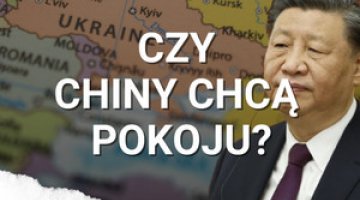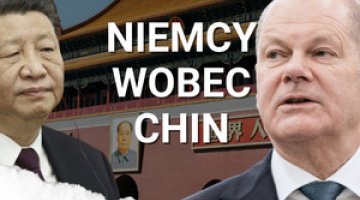The EU clashes with Beijing: the EU-China summit
The 24th European Union-China summit took place in Beijing on 7 December. It was the first face-to-face meeting between the leaders of the EU (Presidents Ursula von der Leyen and Charles Michel) and China (President Xi Jinping and Premier Li Qiang) since 2019. Expectations for the summit were low, as EU-China relations have plunged into their worst crisis in decades. Politically, the EU and China have been strongly divided over Beijing’s economic and diplomatic support for Russia following the latter’s invasion of Ukraine. In the economic sphere, the major sticking point is the EU’s widening trade deficit with China, which has ballooned to more than €400 billion a year as a result of unequal access to each other’s markets and exports of Chinese manufacturing surpluses to Europe.
China’s redefinition of its economic priorities under Xi Jinping, from rapid GDP growth to achieving economic security, has also driven it to make moves that the EU perceives as dangerous. The EU has expressed its concerns about China’s restrictions on exports of raw materials that are crucial for the development of modern technologies, including those relating to the energy transition and the arms sector. It has also opposed China’s subsidies, designed to reduce its dependence on foreign countries, facilitate the expansion of domestic technological capabilities and gradually displace European companies from those markets where they are in competition with China. In addition, the pandemic and China’s assertive foreign policy have contributed to a significant deterioration of this country’s image in European societies (see ‘Views of China’). This trend has also been accompanied by the Chinese public’s perception of the EU as an organisation which is becoming ever weaker. As the world’s largest group of respondents, they believe that the EU will break up within the next 20 years (see ‘Living in an à la carte world: What European policymakers should learn from global public opinion’).
The dialogue’s strategic objectives
The summit in Beijing was the first test for the ‘geopolitical EU’ after the community adopted its Economic Security Strategy last June, in which the European Commission laid out a comprehensive plan to reduce the EU’s economic dependence on China. The term of the current European Commission will end in the autumn of 2024, so the summit was one of the last opportunities to highlight the EU’s assertive agenda towards China, as formulated and implemented by the head of the European Commission, Ursula von der Leyen. From the EU’s perspective, the summit was also a convenient opportunity to take China to task on several contentious issues, such as its support for Russia and exports of Chinese surplus production onto the EU market. In fact, China is currently seeking to smooth its relations with Europe amid its tense rivalry with the US and growing difficulties in accessing the US market. Meanwhile, the Chinese economy has been growing at a slower rate than before the pandemic (see ‘Disappointing post-COVID-19 recovery. China on the path of a protracted slowdown’). Therefore China needs foreign investment, including from Europe, to generate new momentum and create jobs as it grapples with high unemployment among its young people (see ‘Youth unemployment in China hits record-high levels’).
For China, the most important goal of the summit was to slow down the EU’s de-risking agenda, which is aimed at reducing Europe’s dependence on China in strategic sectors, and to counter the consolidation of transatlantic cooperation, primarily in the areas of security (within NATO) and high technology (for example within the Trade and Technology Council). China also expected the summit to confirm that Europe’s policy towards it would remain predictable in the face of the uncertainties resulting from the upcoming election season in the US, the EU and Taiwan. The months-long preparations for the summit, which included three high-level dialogues and visits to Beijing by eight EU commissioners, made it clear to China that the EU’s list of economic expectations was very long, and that on the political level China’s relationship with Russia would strongly influence the shape of its further cooperation with Europe. The commissioners raised the issues of barriers to market access for European companies, industrial policies that lead to overproduction, export subsidies, discriminatory regulations on cross-border data flows and the Chinese government’s insufficient commitment to reducing methane emissions and increasing the country’s capacity to generate renewable energy. Therefore, just before the summit China sent several signals to demonstrate its willingness to engage in dialogue on this array of contentious issues: it granted visa-free entry for citizens of five EU countries (France, Germany, Italy, the Netherlands and Spain) and lifted its economic pressure on Lithuania.
The outcome of the talks
On the economic front, the EU’s main message to China was that the two sides needed to balance their trade relations, and that the EU was determined to protect its market from surging Chinese exports. From the EU’s perspective, Chinese surplus production is particularly important in this context: as China’s economy slows and consumption weakens, these goods will be directed overseas, primarily to the EU market, which is still asymmetrically open to products from China. Additional tariffs, particularly on green technologies, could become a defensive strategy for the EU: it is currently pursuing several anti-subsidy investigations, including into electric cars, and is considering further probes in areas crucial to its energy transition, such as photovoltaics, wind energy technologies and metal alloys. At the summit, the EU also signalled that it would continue to rely on de-risking as its main tool for safeguarding its interests in relations with China. It has already begun to gradually implement this strategy by acting to protect home-grown technologies (see ‘Technologiczny de-risking. Europejska lista technologii krytycznych’) and counter economic coercion by third countries (see ‘Right of retaliation: the EU rolls out a tool to protect itself against economic blackmail’).
In the political dimension, the EU mainly focused on urging China to use its leverage with Russia and push it to halt its assault against Ukraine. One major sticking point between the EU and China is the issue of Chinese companies which have been circumventing the EU’s sanctions by re-exporting European-made dual-use goods to the Russian military. Unless China puts pressure on its companies to stop this practice, 13 of them are likely to be included on the list of entities that evade restrictions in the next package of sanctions against Russia. In addition, the war in Gaza was high on the agenda of the EU-China talks: both sides agreed on the need to ensure the protection of all civilians and improve the dire humanitarian situation in Gaza while also reaffirming their commitment to a two-state solution.
During the summit, China tried to portray itself as a peaceful actor that seeks space for cooperation with Europe and a defender of free trade. Xi Jinping pointed out that the EU remains an important partner for China in economic, industrial and science & technology cooperation. He also emphasised the EU’s independence on the international stage and its crucial importance in the multipolar world order. Xi reportedly said that the EU “is no one’s vassal”, even though China usually portrays the EU’s assertive policy towards it as resulting from US pressure. China also declared that there are synergies between its Belt & Road Initiative and the EU’s Global Gateway, although Brussels has been wary of any cooperation between the two formats.
However, this friendly rhetoric was not backed up by any binding declarations: the Chinese documents published after the summit made no mention of the sensitive issues that the EU had raised, such as the involvement of Chinese companies in the circumvention of the sanctions against Russia, the EU’s de-risking policy, and its request that China investigate the causes of the damage to the Finnish-Estonian gas pipeline last October after suspicions fell on a Chinese ship (see ‘The Balticconnector gas pipeline damage’).
Instead, the meeting in Beijing was marked by China’s assertive rhetoric on Chinese-EU economic relations. Premier Li expressed his opposition to the EU’s protectionism and its politicisation of trade. From China’s perspective, the EU’s strategy for economic security could tie trade issues excessively closely to security questions, and consequently turn the sectoral policy of de-risking into a full decoupling from China, meaning a complete severance of economic ties. Hence, China has been cautioning the EU against adopting restrictive economic and trade policies and using countermeasures in trade. China has sent several warning signals to the EU: it has introduced an export control regime for elements that are crucial for the EU’s energy transition, such as gallium, germanium and graphite, which are important for the photovoltaic sector and the production of batteries for electric cars; it has also required Chinese exporters to report sales of rare earth metals to the ministry of commerce.
Conclusions and prospects
The protracted negative trend in EU-China relations indicates that the space for their cooperation is narrowing, while systemic rivalry is featuring more and more prominently in their mutual relationship. The EU and China have diverging interests with regard to strategic security, including in the economic sphere. Since the beginning of the war in Ukraine, China has been providing economic and diplomatic support to Russia, while its acquisition of European technologies and the asymmetric opening of each other’s markets have posed a threat to the EU’s long-term economic competitiveness.
The summit in Beijing failed to produce a breakthrough as neither side managed to secure any binding declarations on the key issues. In order to focus the event on fundamental challenges, the EU even decided not to sign the technical, sectoral agreements that it had negotiated with China during the commissioners’ visits in the months leading up to the summit. These included agreements on the greater opening of the Chinese market to EU cosmetic products, and on the recognition of more geographic indicators which protect the intellectual property rights of European products in China.
However, the most important value of the meeting in Beijing was that it kept the channels of communication open. From the EU’s perspective, these channels served the purpose of reminding China of the West’s red lines with regard to its cooperation with Russia: the EU’s leaders urged China to refrain from supplying lethal weapons and to stop its companies from circumventing the sanctions. They also issued a call for balance to be restored in trade relations, while stating explicitly that the EU would take steps to enhance its own economic security. For China, on the other hand, the summit offered an opportunity to engage in direct dialogue on the EU’s emerging defensive toolbox for protecting Europe’s economic security and competitiveness, as China sees this as an effort to gradually close the EU market, and as a reflection of rising protectionism on the EU’s part. Both sides also recognise the value of continued cooperation on regulating the use of artificial intelligence and combating climate change. Their willingness to keep the talks going has also been demonstrated by the post-pandemic resumption of the ‘high-level people-to-people dialogue’, which encompasses contacts in the areas of education, culture, youth affairs and sport. The effectiveness of further EU-China cooperation will depend mainly on the shape of China’s future cooperation with Russia, as well as the political will of the next European Commission to continue (or abandon) the policy of strengthening the EU’s competitiveness vis-à-vis China.




